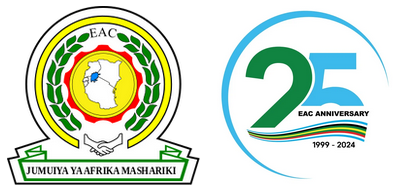Development and Promotion of Extractive Industries and Mineral Value Addition
The EAC is focusing on the Development and Promotion of Extractive Industries and Mineral Value Addition.
This is in recognition that the EAC Partner States are endowed with rich mineral resources potential ranging from gemstones, precious metals, base metals, and industrial & construction minerals amongst others.
These resources have high potential to generate wealth and contribute to social-economic transformation of the EAC economies.
Their exploitation has, however, been limited and largely based on production of mineral commodities for export without further processing to add value in the form of intermediate goods or final products.
The EAC’s regional efforts to promote investment in the extractive and mineral processing industries face a number of challenges, including:
- lack of comprehensive information on the region’s mineral resource potential;
- inadequate capacity in respect of capital, skills, and technology required for investment in these industries; and
- weak regulatory frameworks and policies.
The focus is, therefore, formulation of a programme of measures aimed at improving the regulation and development of the extractive and mineral processing industries, with a view to ensuring more economically integrated and evenly spread industrialisation in the region.
The sector cuts across various countries in the region and has the potential to promote regional industries in EAC.
Programme Objectives
- To develop a harmonised and facilitative regulatory and institutional framework for promoting investment in the extractive and mineral processing industries and hence, stimulating the development of regional industries which fosters industrial linkages and complementarities within the region;
- To establish / strengthen regional and national capabilities in the field of industrial mineral management, extraction, prospecting, and processing and marketing;
- To improve knowledge and information on availability and utilisation options of industrial mineral resources through appropriate information collection, dissemination and exchange mechanisms among EAC Partner States.
- To provide an assessment of the necessary complementary infrastructure supports required as pre-conditions for investments into the extractive and mineral processing (This objective may not be necessary if issues like energy, fully developed special economic zones, required inter-connecting roads linking mineral belts with processing centres will be covered under the first objective).
What the Programme entails
- Examination of the existing legal, regulatory, and institutional constraints and determining appropriate measures for interventions at Partner State level and EAC regional level, and formulate proposals for implementation of the relevant intervention measures.
- Assessment of the region’s mineral resource potential and options for utilisation of the minerals in within the region.
- Diagnostic assessments of the objective of this activity to identify specific legal, regulatory, and institutional strengths and weaknesses for utilisation of available mineral resources and measures to alleviate such constraints, both at the country level and regional level.
- Analysis and study of utilisation options of the available mineral resources, including profiling of available mineral resources in the region for purposes of targeted investment promotion campaign and required supporting infrastructural services.
- Development of promotional materials i.e. an inventory and project profiles of mineral resource base and their potential industrial utilisation / application and a regional framework including technical information on the industrial minerals and incentives available.
